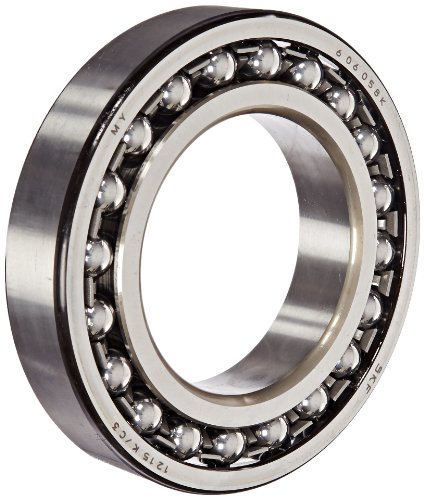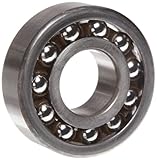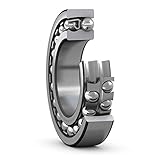All Categories



SKF 2310 K/C3 Double Row Self-Aligning Bearing, Tapered Bore, ABEC 1 Precision, Open, Steel Cage, C3 Clearance, Metric, 50mm Bore, 110mm OD, 40mm Width
Share Tweet
*Price and Stocks may change without prior notice
*Packaging of actual item may differ from photo shown
- Electrical items MAY be 110 volts.
- 7 Day Return Policy
- All products are genuine and original
- Cash On Delivery/Cash Upon Pickup Available








SKF 2310 K/C3 Double Row Self-Aligning Features
-
Self-aligning bearing for applications subject to shaft deflections or misalignments between the shaft and housing
-
Tapered bore with 1:12 taper for compensating for a flexing shaft or fitting to a tapered shaft
-
Open configuration for lubrication applied in place
-
Pressed steel cage evenly spaces balls for reduced friction, vibration, and noise
-
C3 radial internal clearance is larger than normal allowing for thermal expansion
About SKF 2310 K/C3 Double Row Self-Aligning
This SKF double-row self-aligning ball bearing is an open bearing, and has a tapered bore, pressed steel cage, and C3 clearance rating. It is suitable for applications supporting moderate radial loads and moderate to low thrust loads. This bearing has concave sphered housing rings to compensate for static angular misalignments between the shaft and housing in applications subject to shaft deflections or mounting errors. Because this bearing type has the lowest operational friction of all rolling bearings, it runs cool at high speeds. The bearing is made of low-alloy, through-hardened chromium steel for durability and resistance to deformity under heavy loads. The bearing has a tapered bore with a standard 1:12 taper to compensate for shaft deflection or to mount on a tapered shaft using an interference fit. Its open design facilitates lubricating the bearing in place and dissipating heat. This bearing has a pressed steel cage to prevent the balls from coming into contact with each other during use, reducing friction, vibration, and noise. The bearing has a C3 radial internal clearance designation to indicate that the radial slack between the inner and outer rings is greater than the standard CN (normal) clearance. It allows for thermal expansion as the bearing supports radial loads and its balls, operating in the deep raceway geometry, reduce rotational friction. Additionally, this bearing is produced to normal tolerances in accordance with International Organization for Standardization (ISO) 492:2002 standards for quality assurance. This self-aligning ball bearing is for use in commercial and industrial applications including film processing equipment, office automation, vertical spinning equipment, and industrial countershafts, among others. Rolling bearings use rolling elements to maintain the separation between moving parts to reduce rotational friction and support radial and axial loads. These elements can be one of the following types: ball, cylindrical, spherical, barrel, needle, spindle, or tapered. All rolling bearings are open, shielded, or sealed. Sealed bearings are lubricated with oil or grease in the bearing factory, while open and shielded bearings are meant to be lubricated in place, with periodic reapplication of lubrication, based on use. The shield protects the working parts of the bearing from environmental debris that may be introduced and could reduce the ball bearing speed and lifespan. Rolling bearings are used in a range of applications from agricultural machinery to conveying equipment, robotics, dental equipment, elevators, rolling mills, ship rudder shafts, and aggregate crushers, among others. SKF manufactures bearings, seals, and lubrication systems for automotive, OEM, energy, and other and industrial applications. The company, founded in 1907, is headquartered in Gothenburg, Sweden, and meets International Organization for Standardization (ISO) TS 16949 and 9001 standards for quality assurance.



















